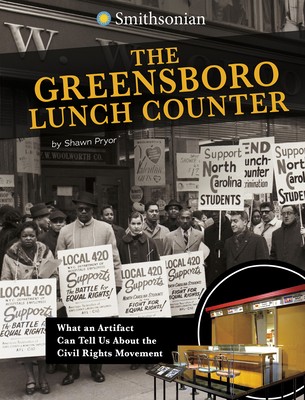
- We will send in 10–14 business days.
- Author: Shawn Pryor
- Publisher: Capstone Press
- ISBN-10: 1496696840
- ISBN-13: 9781496696847
- Format: 16.8 x 22.4 x 0.4 cm, minkšti viršeliai
- Language: English
- SAVE -10% with code: EXTRA
Reviews
Description
On February 1, 1960, four young Black men sat down at a Woolworth's lunch counter in Greensboro, North Carolina, and staged a nonviolent protest against segregation. At that time, most lunch counters in the South did not serve Black people. Soon, thousands of students were staging sit-ins across the South. In just six months, the Greensboro Woolworth's lunch counter was integrated. How did it become a symbol of civil rights? Find out the answer to this question and more about what an artifact can tell us about history.
- Author: Shawn Pryor
- Publisher: Capstone Press
- ISBN-10: 1496696840
- ISBN-13: 9781496696847
- Format: 16.8 x 22.4 x 0.4 cm, minkšti viršeliai
- Language: English English
On February 1, 1960, four young Black men sat down at a Woolworth's lunch counter in Greensboro, North Carolina, and staged a nonviolent protest against segregation. At that time, most lunch counters in the South did not serve Black people. Soon, thousands of students were staging sit-ins across the South. In just six months, the Greensboro Woolworth's lunch counter was integrated. How did it become a symbol of civil rights? Find out the answer to this question and more about what an artifact can tell us about history.


Reviews